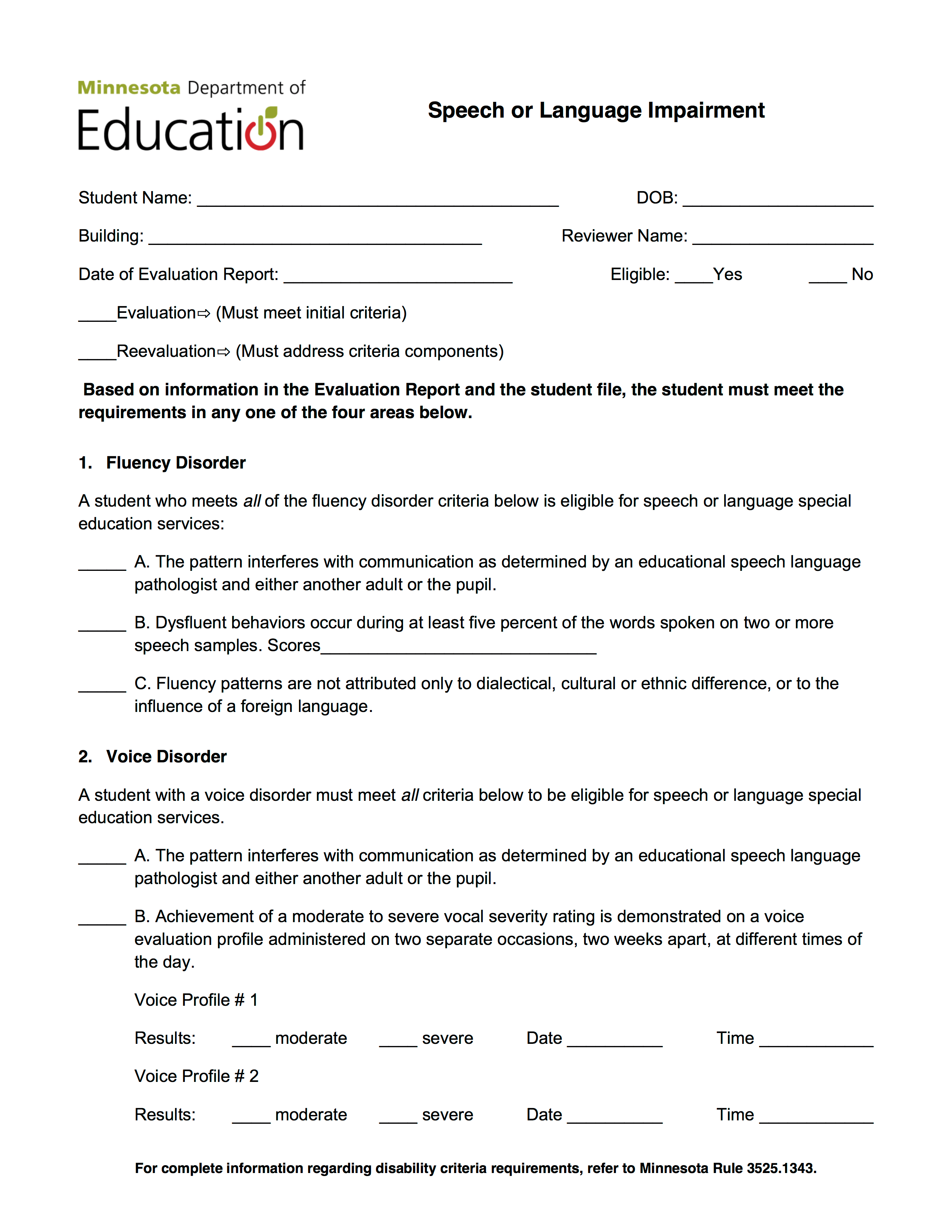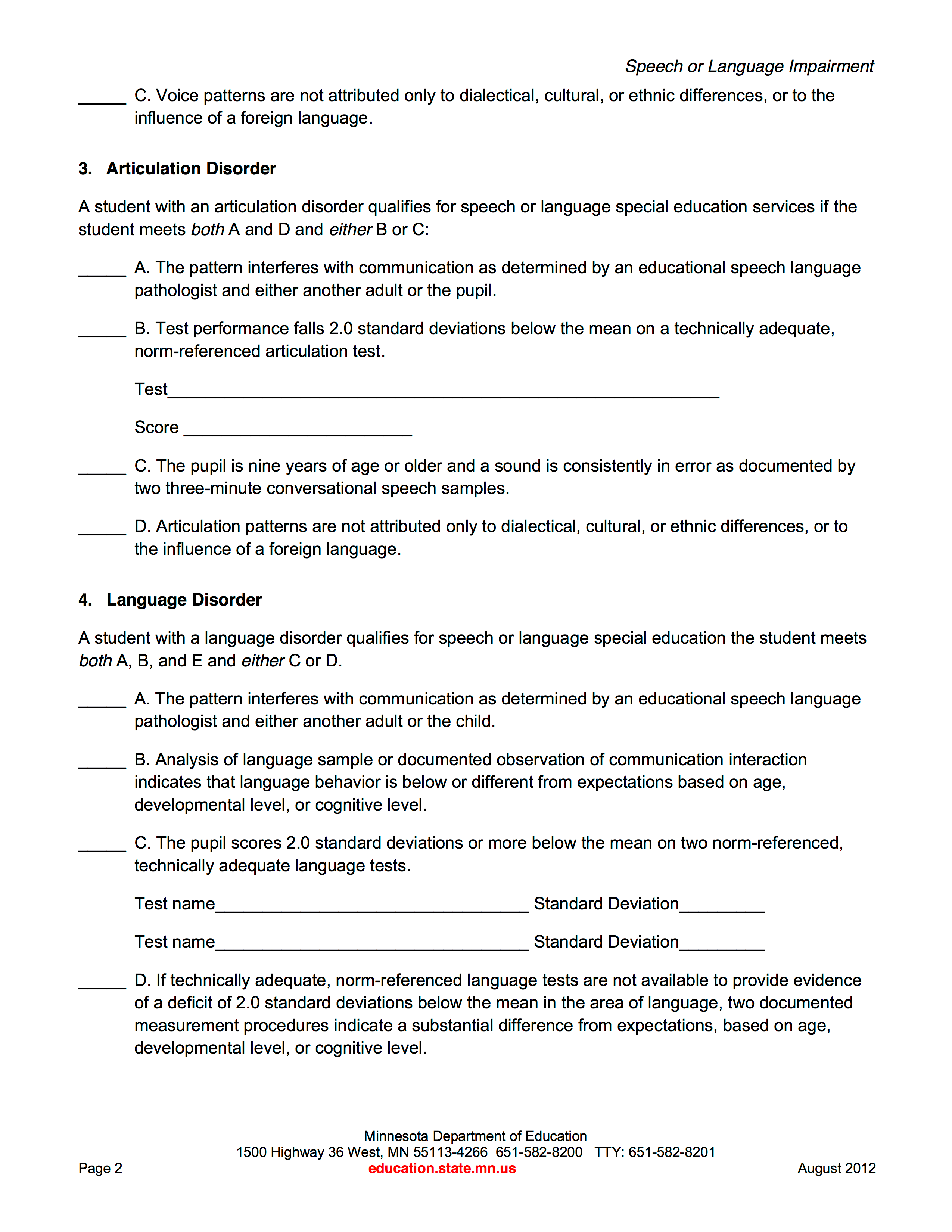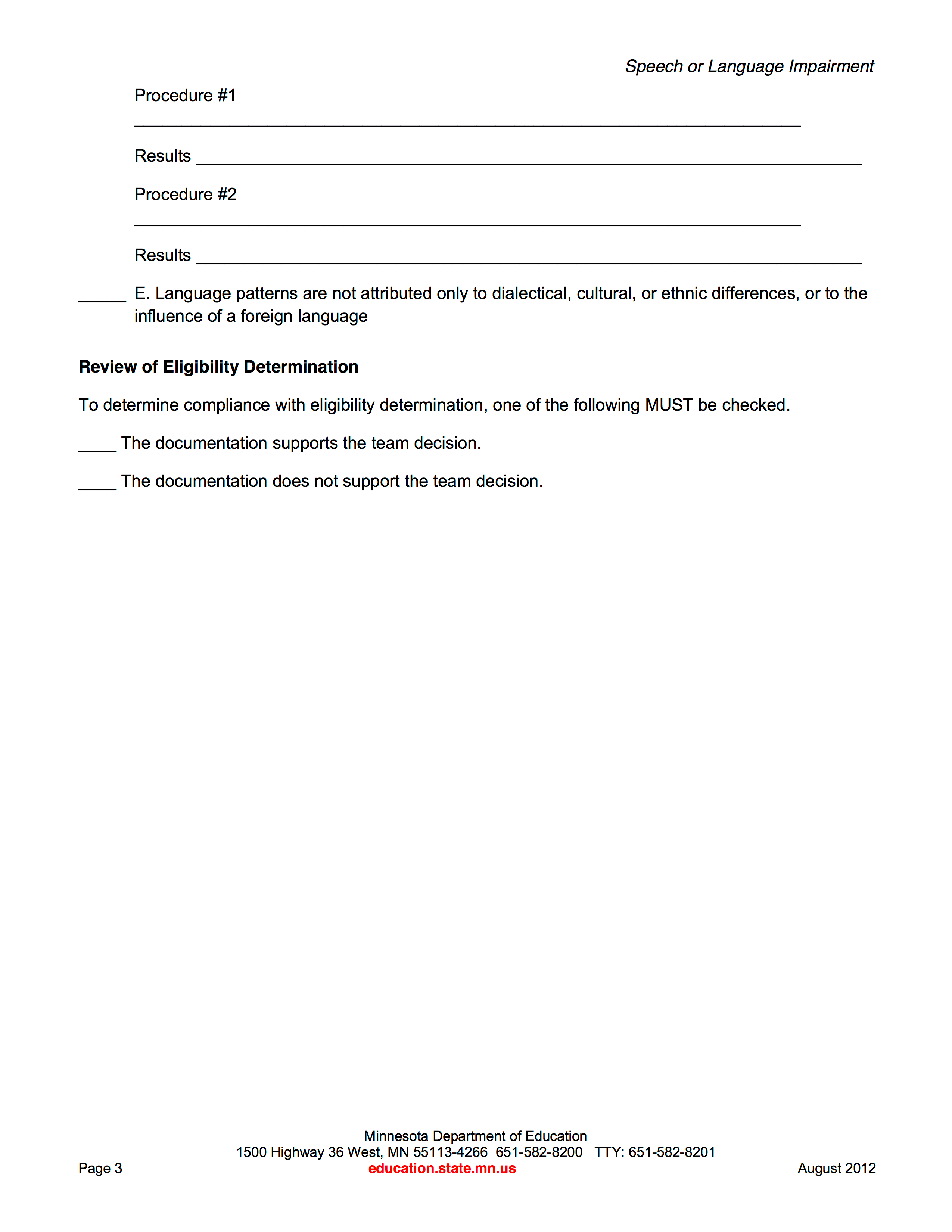
Speech or Language Impairment
Disability Label & Prevalence |
Definition |
General Characteristics |
Identification & Assessment |
Educational Approaches |
Educational Placement Alternatives |
Communication Disorders 2.5% General Population |
ASHA – impairment in the ability to receive, send, process, and comprehend concepts or verbal, non-verbal and graphic symbols systems. |
Speech-Sound Errors: articulation disorders, phonological disorders; Fluency Disorders: stuttering, cluttering; Voice Disorders; Language Disorders. |
Screening and Teacher Observation |
Treating Speech-Sound Errors, Fluency Disorders, Voice Disorders: work with speech-language pathologist (SLP) Language Disorder: vocabulary building, naturalist strategies |
General Education Classroom: Monitoring, Collaborative Consultation, Classroom or Curriculum Based Resource Rooms Separate Classrooms |
Description of 2 evidence-based strategies |
Speech Language Approach: knowing phonological decoding is essential to reading. To obtain this success the program has two stages. Stage 1: Training Phonemic Awareness for Constant-Sound Perception, meaning the students have to be able to perceive phoneme (smallest sound in word) as a discrete entity, and Stage 2: Matching Letter to Sound – Introductory Systematic Phonic, meaning the students understand which letters make which sounds (Gerber & Klein, 2004). PECS incorporates the use of a series of icons or pictures and sign language is a system of standardized gestures for use in communication (Spencer, Petersen, & Gillam, 2008). PECS teaches nonverbal users to successfully request highly motivating items and outcomes before moving on to other aspects of language. It’s unique because it teaches users to approach a communication partner before introducing lessons on vocabulary (Heward, 2012). |
Practitioner Based Article related to this area: Include reference and summary of the article. |
This study investigated the ability of 30 third grade teachers to identify speech handicapped children and the extent to which this ability was related to the type and/or the severity of the speech problem. Results indicated that classroom teachers identified approximately two out of five children with speech problems; however, teachers referred four out of five children whose speech problems were severe enough to warrant therapy. The percentage of accurate referrals tended to rise as the severity of the disorder increased. These results, when considered with those obtained in similar studies, may be interpreted two ways: teachers consistently fail to identify a large percentage of speech handicapped children, and therapists' judgments as to what constitutes a speech problem are unnecessarily severe (James & Cooper, 1966). |
MN Eligibility Checklist


